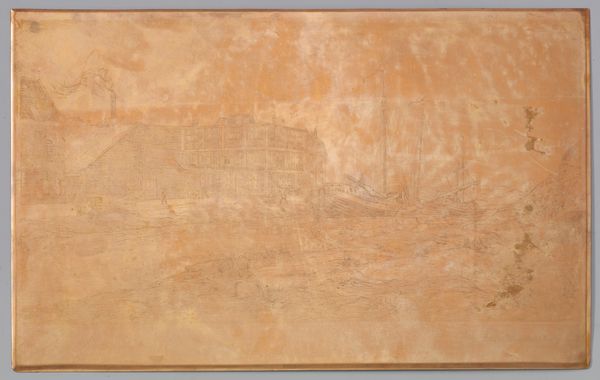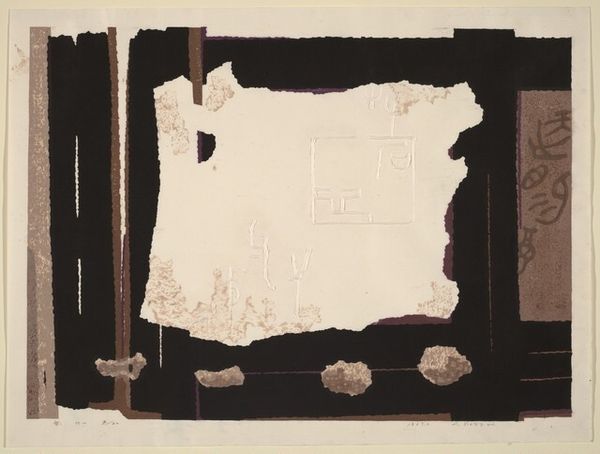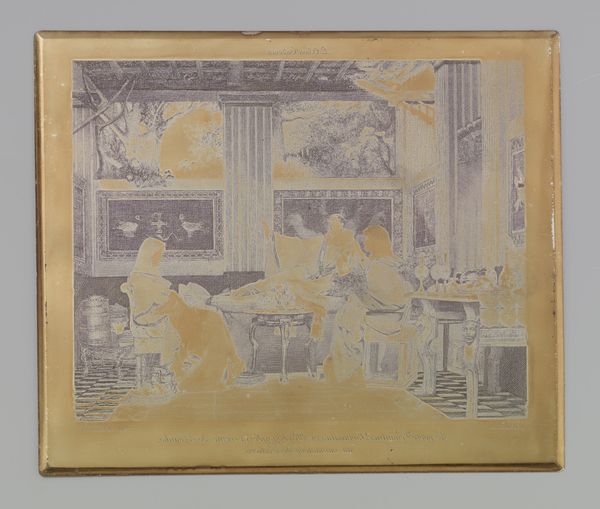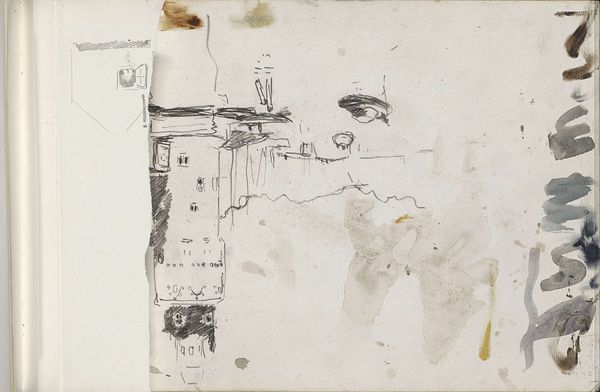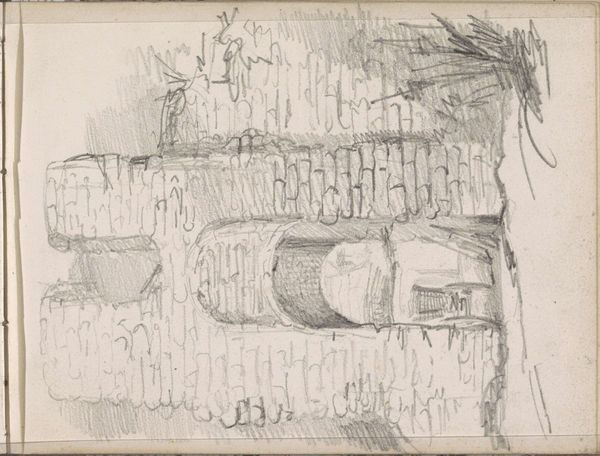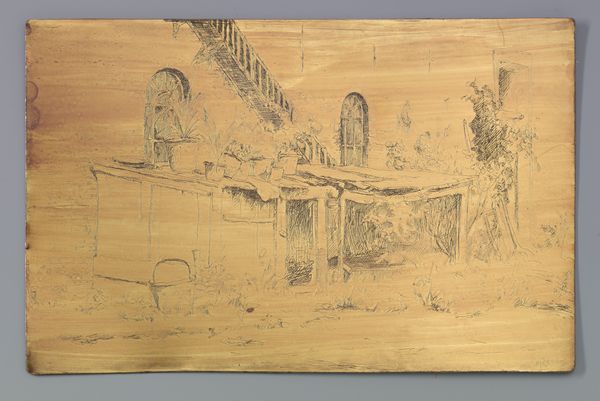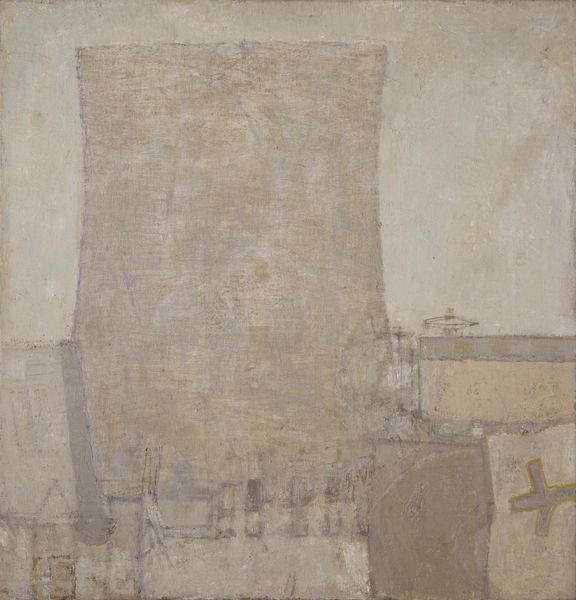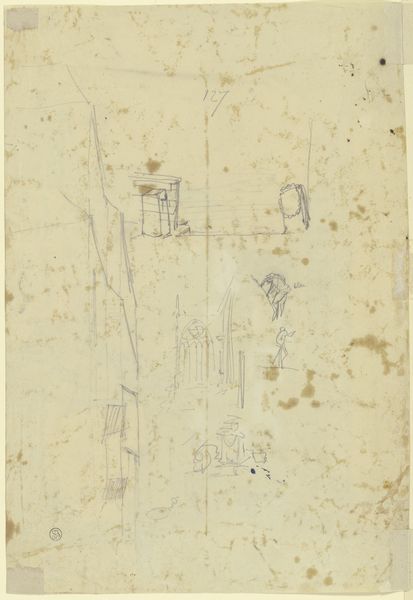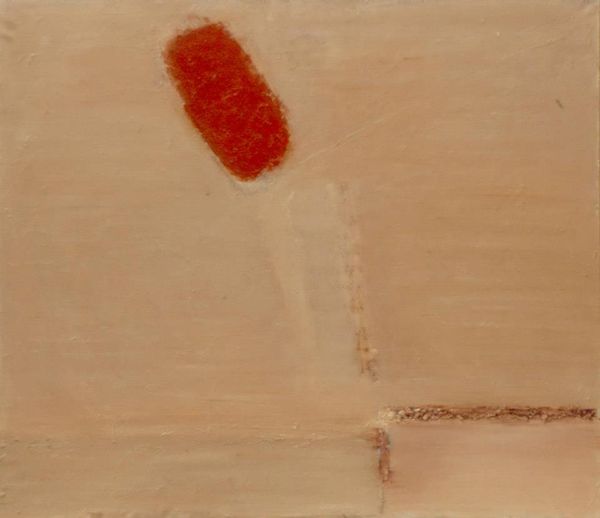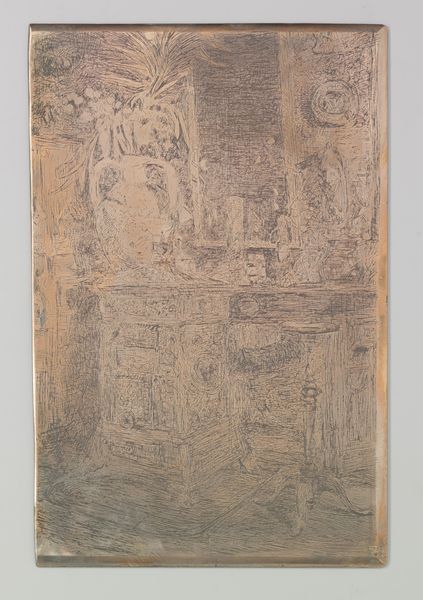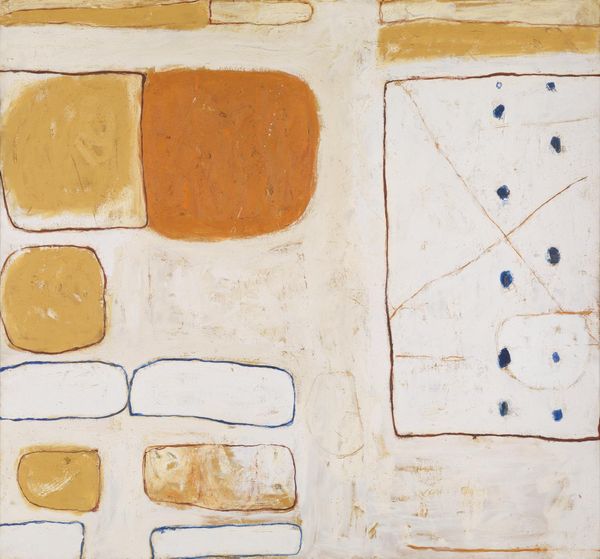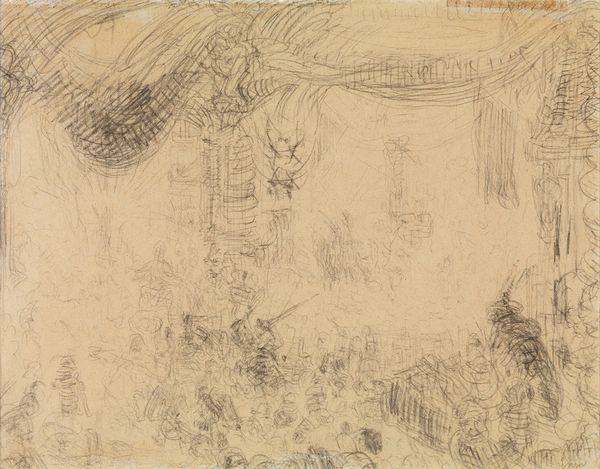
painting, fresco, mural
#
water colours
#
painting
#
landscape
#
ancient-egyptian-art
#
fresco
#
egypt
#
mural
Dimensions: H. 33.5 cm (13 3/16 in); w. 71 cm (27 15/16 in) scale 1:2
Copyright: Public Domain
Editor: So, this is "House with Storerooms, Tomb of Ineni," from around 1550 BC. It's a mural, a fresco even, by Nina de Garis Davies. There's a rawness to it; it feels unfinished, a bit like a blueprint. What strikes you most about it? Curator: I'm immediately drawn to the materials and labor embedded in this work. It's not just paint on a surface; it's evidence of the physical act of constructing a space, a tomb. The fresco medium itself, demanding rapid execution, reveals the immediacy and demands placed on the artists by production goals and constraints. Consider, what does it mean to represent "house" and "storerooms" in a *tomb*? Editor: It seems practical – illustrating everyday life, providing for the afterlife? Curator: Exactly, but it goes further. By depicting storerooms filled, supposedly, with provisions, the fresco addresses the cycle of production and consumption—vital aspects of society represented here. And the labor! Creating a fresco demands specialized skills and a coordinated workforce. Whose labor is valued? How is labor organized to produce it? This is, on its face, just a depiction of walls, storerooms and a tree -- but really, we should read the economic, political and historical moment encoded in it. Editor: That’s fascinating. It makes me think about the societal resources and the hierarchies involved. Was this typical for tombs of this era? Curator: Yes, depictions of daily life were common. I wonder what narratives the commissioners want to convey of themselves by the objects, storage rooms and material goods, since they dictate and consume the production and manufacturing happening within. It makes me wonder whether or not they themselves worked to build it and painted this. Editor: I never considered looking at it through that lens. It's made me see that seemingly simple images can hold a wealth of information about the labor and economics of the time. Thanks! Curator: Indeed! By examining materiality and processes, we unlock broader social and historical contexts. Every material choice, every application technique tells us about not only the artwork itself, but about how they wish to be depicted, as powerful in real life as in death.
Comments
No comments
Be the first to comment and join the conversation on the ultimate creative platform.
